ethyl 2,3-dicyano-3-methyl-butanoate
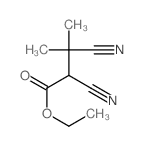
ethyl 2,3-dicyano-3-methyl-butanoate structure
|
Common Name | ethyl 2,3-dicyano-3-methyl-butanoate | ||
|---|---|---|---|---|
| CAS Number | 52119-01-4 | Molecular Weight | 180.20400 | |
| Density | 1.074g/cm3 | Boiling Point | 340.3ºC at 760 mmHg | |
| Molecular Formula | C9H12N2O2 | Melting Point | N/A | |
| MSDS | N/A | Flash Point | 148.4ºC | |
| Name | ethyl 2,3-dicyano-3-methylbutanoate |
|---|---|
| Synonym | More Synonyms |
| Density | 1.074g/cm3 |
|---|---|
| Boiling Point | 340.3ºC at 760 mmHg |
| Molecular Formula | C9H12N2O2 |
| Molecular Weight | 180.20400 |
| Flash Point | 148.4ºC |
| Exact Mass | 180.09000 |
| PSA | 73.88000 |
| LogP | 1.23906 |
| Index of Refraction | 1.452 |
|
Version 1.2
Regulation (EC) No 1907/2006 1 - Product and Company Information Product NameETHYL 2,3-DICYANO-3-METHYLBUTY - 250 MG RATE 2 - Hazards Identification SPECIAL INDICATION OF HAZARDS TO HUMANS AND THE ENVIRONMENT Harmful by inhalation, in contact with skin and if swallowed. 3 - Composition/Information on Ingredients Product NameCAS #EC noAnnex I Index Number ETHYL 2,3-DICYANO-3-METHYLBUTYRATE 52119-01-4 NoneNone FormulaC9H12N2O2 4 - First Aid Measures AFTER INHALATION If inhaled, remove to fresh air. If not breathing give artificial respiration. If breathing is difficult, give oxygen. AFTER INGESTION If swallowed, wash out mouth with water provided person is conscious. Call a physician. 5 - Fire Fighting Measures EXTINGUISHING MEDIA Suitable: Carbon dioxide, dry chemical powder, or appropriate foam. SPECIAL RISKS Specific Hazard(s): Emits toxic fumes under fire conditions. SPECIAL PROTECTIVE EQUIPMENT FOR FIREFIGHTERS Wear self-contained breathing apparatus and protective clothing to prevent contact with skin and eyes. ALDRICHwww.molbase.com 6 - Accidental Release Measures PERSONAL PRECAUTION PROCEDURES TO BE FOLLOWED IN CASE OF LEAK OR SPILL Evacuate area. PROCEDURE(S) OF PERSONAL PRECAUTION(S) Wear self-contained breathing apparatus, rubber boots, and heavy rubber gloves. METHODS FOR CLEANING UP Cover with dry lime or soda ash, pick up, keep in a closed container, and hold for waste disposal. Ventilate area and wash spill site after material pickup is complete. 7 - Handling and Storage HANDLING Directions for Safe Handling: Do not breathe vapor. Do not get in eyes, on skin, on clothing. Avoid prolonged or repeated exposure. STORAGE Conditions of Storage: Keep tightly closed. Store in a cool dry place. 8 - Exposure Controls / Personal Protection ENGINEERING CONTROLS Safety shower and eye bath. Use only in a chemical fume hood. GENERAL HYGIENE MEASURES Wash thoroughly after handling. Discard contaminated shoes. PERSONAL PROTECTIVE EQUIPMENT Special Protective Measures: Wear appropriate government approved respirator, chemical-resistant gloves, safety goggles, other protective clothing. 9 - Physical and Chemical Properties pH N/A BP/BP RangeN/A MP/MP RangeN/A Flash PointN/A FlammabilityN/A Autoignition TempN/A Oxidizing Properties N/A Explosive Properties N/A Explosion LimitsN/A Vapor PressureN/A Partition Coefficient N/A ViscosityN/A Vapor DensityN/A Saturated Vapor Conc. N/A Evaporation RateN/A Bulk DensityN/A Decomposition Temp.N/A Solvent ContentN/A Water ContentN/A ALDRICHwww.molbase.com Surface TensionN/A ConductivityN/A Miscellaneous DataN/A SolubilityN/A 10 - Stability and Reactivity STABILITY Materials to Avoid: Strong oxidizing agents. HAZARDOUS DECOMPOSITION PRODUCTS Hazardous Decomposition Products: Carbon monoxide, Carbon dioxide, Nitrogen oxides, Hydrogen cyanide. 11 - Toxicological Information SIGNS AND SYMPTOMS OF EXPOSURE To the best of our knowledge, the chemical, physical, and toxicological properties have not been thoroughly investigated. ROUTE OF EXPOSURE Skin Contact: May cause skin irritation. Eye Contact: May cause eye irritation. Inhalation: Material may be irritating to mucous membranes and upper respiratory tract. Multiple Routes: Harmful if swallowed, inhaled, or absorbed through skin. 12 - Ecological Information No data available. 13 - Disposal Considerations SUBSTANCE DISPOSAL Dissolve or mix the material with a combustible solvent and burn in a chemical incinerator equipped with an afterburner and scrubber. Observe all federal, state, and local environmental regulations. 14 - Transport Information RID/ADR Non-hazardous for road transport. IMDG Non-hazardous for sea transport. IATA Non-hazardous for air transport. 15 - Regulatory Information CLASSIFICATION AND LABELING ACCORDING TO EU DIRECTIVES INDICATION OF DANGER: Xn Harmful. R-PHRASES: 20/21/22 Harmful by inhalation, in contact with skin and if swallowed. S-PHRASES: 36 Wear suitable protective clothing. ALDRICHwww.molbase.com Caution: Substance not yet fully tested (EU). COUNTRY SPECIFIC INFORMATION Germany WGK: 3 Self-Classification 16 - Other Information WARRANTY The above information is believed to be correct but does not purport to be all inclusive and shall be used only as a guide. The information in this document is based on the present state of our knowledge and is applicable to the product with regard to appropriate safety precautions. It does not represent any guarantee of the properties of the product. Inc., shall not be held liable for any damage resulting from handling or from contact with the above product. See reverse side of invoice or packing slip for additional terms and conditions of sale. Copyright 2010 Co. License granted to make unlimitedpaper copies for internal use only. DISCLAIMER For R&D use only. Not for drug, household or other uses. ALDRICHwww.molbase.com SECTION 16 - ADDITIONAL INFORMATION N/A |
|
~69% 
ethyl 2,3-dicya... CAS#:52119-01-4 |
| Literature: Aizencang; Frydman; Giorgieri; Sambrotta; Guerra Journal of Medicinal Chemistry, 1995 , vol. 38, # 21 p. 4337 - 4341 |
|
~% 
ethyl 2,3-dicya... CAS#:52119-01-4 |
| Literature: Smith; Horwitz Journal of the American Chemical Society, 1949 , vol. 71, p. 3418 |
|
~% 
ethyl 2,3-dicya... CAS#:52119-01-4 |
| Literature: Higson; Thorpe Journal of the Chemical Society, 1906 , vol. 89, p. 1460 |
|
~% 
ethyl 2,3-dicya... CAS#:52119-01-4 |
| Literature: Adhya et al. Journal of the Chemical Society, 1956 , p. 358,360 |
| 2,3-dicyano-3-methyl-butyric acid ethyl ester |



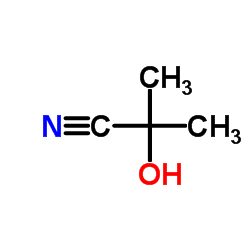
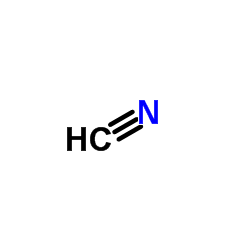
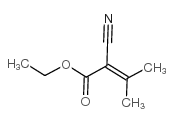
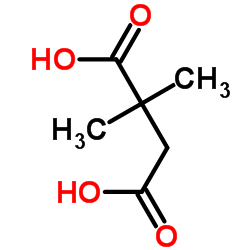 CAS#:597-43-3
CAS#:597-43-3 CAS#:39155-16-3
CAS#:39155-16-3